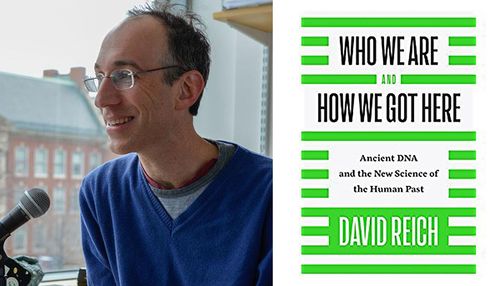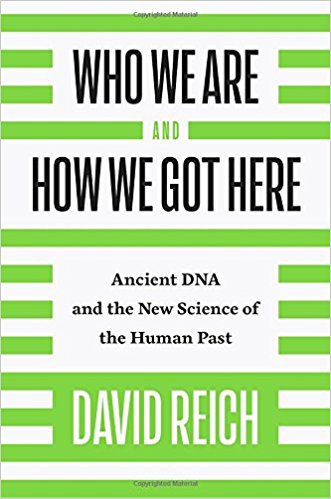
A Talk Radio Listener Says David Reich’s WHO WE ARE Is A Must-Read
05/20/2018
From: A Talk Radio Listener

I’m most of the way through the digital edition of David Reich’s book Who We Are and How We Got Here and may read it again, now that I know what to look for. This is a fascinating book that is quite well written for a scientific work. Most interesting are the ancient Homo population divergences in Eurasia of Denisovan from Homo erectus, Neanderthal from Denisovan, and the Denisovan north/south split. Also the ghost population of northeast Eurasia that left DNA in American Indians and Europeans but not in East Asians or current residents of Siberia and that has now been confirmed by specimen with recent DNA analysis of the Mal'ta skeleton from Siberia. Europeans have more DNA in common with native Americans than with east Asians, thanks to the ghost population that no longer exists.
Also the fact that migrating herders from the steppes of the east almost completely displaced European hunter-gatherers, including the builders of Stonehenge and the famous Alpine mummy. There was wholesale replacement of the European population only a few thousand years ago. There’s no DNA evidence from living people or ancient bones of any non-Bering Strait migration to North America, but in Amazonian tribes there is evidence of an original migration of people related to native Australians (not Polynesians) who must have come through NE Asia but have left no DNA there or elsewhere in North America, having been swamped by the later migration of typical native Americans except in difficult to penetrate Amazonia.
There appears to have been migration back to Africa from Eurasia before the final migration from Africa. There is more Neanderthal DNA in native Australians than in any other population. Europeans are a close second. East Asians have little if any. Native Australians also have the most Denisovan DNA, by a lot. East Asians are second, from a different interbreeding with Denisovans. Europeans have little if any, except that Neanderthals might be classified as a type of Denisovan — they're both archaic species or subspecies of humans. There were at least four waves of migration across the Bering Strait, leaving three families of languages, one of which covers 90% of native Americans and all languages south of Arizona. There were two waves of steppe people migration into India, leaving southern Indians with about 25% steppe DNA and northern Indians more than 50%, also reflected in the regions of Indo-European languages.
Bottom line: be skeptical of everything published previously and start with this book. Recent advances make it possible to extract DNA from bones that were considered unusable for DNA previously, and researchers now have considerable expertise on hindcasting from DNA samples of current human populations. In ornithology, the most ardent traditional taxonomists have died out or given up over the past 25 years since the earliest DNA taxonomy, and DNA bird taxonomy has become considerably more detailed and refined. The same is happening in human taxonomy. What’s known already from DNA has blown up many traditional, accepted beliefs about human population movements and relationships. Meanwhile, the worldwide search for more ancient bones continues.
